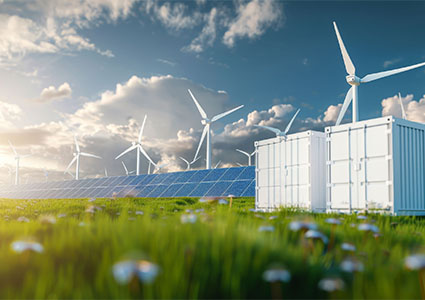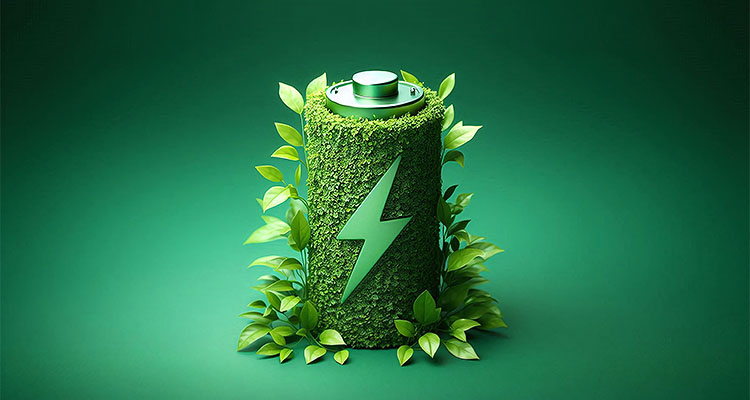The UK is open for Battery Energy Storage Systems (BESS) business in 2025
The UK Government’s ambition to decarbonize of the country’s power system by 2030 is a clarion call to the energy storage industry, writes Giles Hanglin, CEO of Apatura.
Westminster’s plans for the UK’s energy system will require up to 27GW of installed battery storage capacity. From policy changes for planning and accelerating grid connection to new revenue streams for energy storage providers, 2025 is set to be a big year for batteries in the UK.
Cutting through the grid connection chaos
The UK’s National Energy System Operator (NESO) says achieving a clean power system in 2030 will require installed clean energy generation and storage capacity of around 210GW to 220GW, with around half coming from wind and solar.

But the UK grid currently lacks the capacity to accommodate a massive renewables energy push. According to Bloomberg New Energy Finance (BNEF), for every £1 the UK has spent on renewables it has spent only 25p on cables and power lines. This imbalance highlights the urgent need for grid expansion and smarter policies to accelerate battery deployment, to ensure the grid can balance supply and demand and keep the lights on.
NESO’s planned overhaul of the application system as part of its Clean Power Plan would cut delays affecting hundreds of approved projects ready to connect to the grid and would pare down the 722GW of projects currently in the queue. Schemes will be prioritized if they can be operational within five years and contribute to the right mix of renewable generation types in the right location and at the right voltage to hit the Government’s 2030 goals.
UK BESS capacity on track to hit 8GW in 2025
By the end of 2025, cumulative UK installed grid battery capacity is set to reach 8GW. While speeding up grid connections is welcome, simplifying local planning policies is equally crucial.
NESO’s Clean Power 2030 Action Plan calls for a ‘radical reduction’ in the time it takes to achieve planning consent for renewables and energy storage schemes, among other measures, to achieve power system decarbonization by 2030.
Supersized batteries: scaling up storage
Capacities of BESS projects will continue to increase. Larger projects are cheaper per megawatt (MW) to build, and as the UK continues to add more wind and solar capacity, bigger batteries can capture more of this clean electricity at times when output outstrips demand, instead of it being curtailed.
Locational benefits of BESS emerge
Expect to see the locational benefits of BESS become more pronounced in 2025 and beyond. Batteries in the northern Scotland and south-east England have already been earning more than the average compared to BESS in the midlands and south-west of England (source: Modo Energy).
In northern Scotland, where wind generation often exceeds local demand, battery storage sites can store surplus electricity cheaply and sell it later when prices rise (‘arbitrage’). Energy storage sites store the surplus energy and then earn revenues according to the difference between the wholesale price and offer price. As more wind capacity is added north of the border, these locational dynamics will become even more pronounced and significant.
Batteries will continue to get cheaper
The cost of lithium-ion batteries has fallen steadily over the past decade and will continue to do so in the year ahead. New BESS projects due online in 2025 and the next few years will be able capitalize on much cheaper batteries.
However, older assets will face challenges as they compete with newer, cheaper systems that can offer more competitive bids and prices. But this benefits the energy system overall, as ancillary service costs continue to fall.

New revenue opportunity plays to the strengths of BESS
In 2025, grid batteries will be able to earn revenues in the Quick Reserve service, one of a suite of services being introduced by NESO to enhance response services and to progress the goal of operating the electricity network with zero carbon.
Quick Reserve is designed for frequency management when there is an imbalance between the demand for energy versus available supply. It will react to pre-fault disturbances to restore the energy imbalance quickly and return the frequency close to 50Hz.
This service highlights the unique strengths of BESS in providing rapid, zero-carbon grid support. Phase one of Quick Reserve is expected to deliver annual consumer savings of £29m-£32m while continuing to decarbonize the power system.
A pivotal year ahead for BESS
2025 must be a turning point for BESS. These systems have proven their value in maintaining grid stability and keeping the lights on, such as during interconnector failures with Norway and France in 2022 and 2024.
BESS in the right location can deliver multiple benefits, from maintaining supply and demand to reducing curtailment of wind and deferring or reducing network investments. In 2025, policymakers, NESO, and Ofgem need to prioritize storage as an essential piece of the UK’s wider clean energy strategy.
Giles Hanglin is CEO of UK renewable energy storage specialists Apatura. Apatura specializes in the development, construction, and future operation of Battery Energy Storage Systems (BESS), renewable energy projects, and energy infrastructure that power clean energy solutions and enable essential data center services. By creating the connections and capacity needed to support the renewable transition and the digital economy, Apatura is shaping a future powered by clean, renewable energy – one that fosters both prosperity and sustainability.
